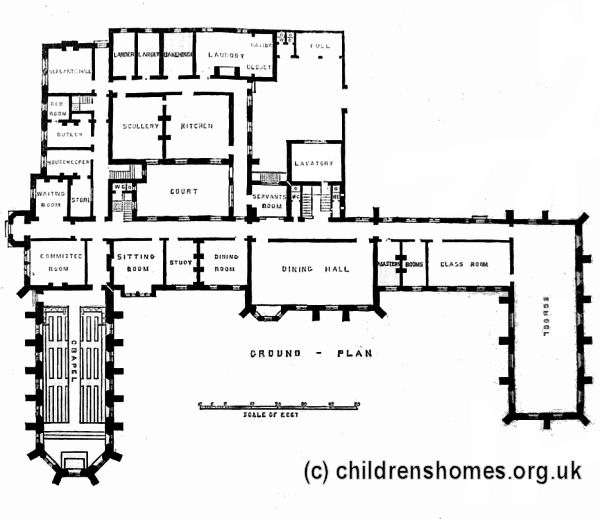Clergy Orphan School for Boys, St John's Wood, London, and Canterbury, Kent
The Clergy Orphan Society was founded in 1749 to maintain and educate the orphaned (i.e. fatherless) children of Anglican clergymen, with subscribers to its funds including King George III and Princess Amelia. Initially, the charity paid for children to be educated at existing schools, beginning on May 30th, 1751, when John Pyrke was sent to a school in Thirsk, Yorkshire. The Society subsequently established its own School at Acton, in Middlesex. In 1805, it was agreed that the charity's objects should be to teach the orphan children humility, obedience, courtesy and submission to parents and superiors, and also to give them enough education to enable them to become useful members of society. Accordingly the curriculum was just to include reading, writing and basic arithmetic.
In 1809, the Society was reconstituted as the Clergy Orphan Corporation. Three years later, the School moved to new, purpose-built premises at St John's Wood, adjacent to the Lord's Cricket Ground. The location of the St John's Wood site is shown on the 1895 map below.

The accommodation at St John's Wood eventually became insufficient and on October 2nd, 1855, the boys were relocated to new premises at St Thomas Hill, Canterbury. The move was made possible by a donation from Dr Samuel Warneford of £3,000 for the purchase of the site, £4,000 towards the erection of the buildings, and £6,000 to found scholarships. The new building was designed by Mr P.C. Hardwick and its foundation stone was laid by the Bishop was laid on 29th June, 1854. The premises initially accommodated 120 boys but with provision being made for subsequent enlargement to house around 200.

Clergy Orphan School for Boys from the south-east, Canterbury, 1856.
A ground-floor plan of the original building is shown below.

Clergy Orphan School for Boys, Canterbury, ground-floor plan, 1856.
Until 1903, admission to the school was by election of the charity's subscribers in May and November. Candidates were required to produce a certificate from the minister of their home parish, specifying their exact ages, that they could read and write, had been taught the Church Catechism, and that they were fit and proper objects of the charity. A medical certificate was required as to their general health and freedom from physical defects. The age for admission was between 8 and 12 years, with the boys generally leaving at the age of 15, but if they passed a good examination, an additional year could be granted to them.
In 1897, the school was renamed St Edmund's School. Fee-paying pupils were admitted from 1902, and the first dayboys in 1937. During the Second World War, the School was evacuated to Cornwall. In 1972, the school took on the education of Canterbury Cathedral's choristers, and the first girls were admitted to St Edmund's in 1982. In 1996 the school was refounded as an independent co-educational school for children aged from 3 to 18.
The Clergy Orphan School for Girls later moved from St John's Wood to Bushey, Hertfordshire.
Records
Note: many repositories impose a closure period of up to 100 years for records identifying individuals. Before travelling a long distance, always check that the records you want to consult will be available.
Bibliography
- Asbury-Bailey, Jock Foundation on a Hill (2007)
Links
Except where indicated, this page () © Peter Higginbotham. Contents may not be reproduced without permission.


